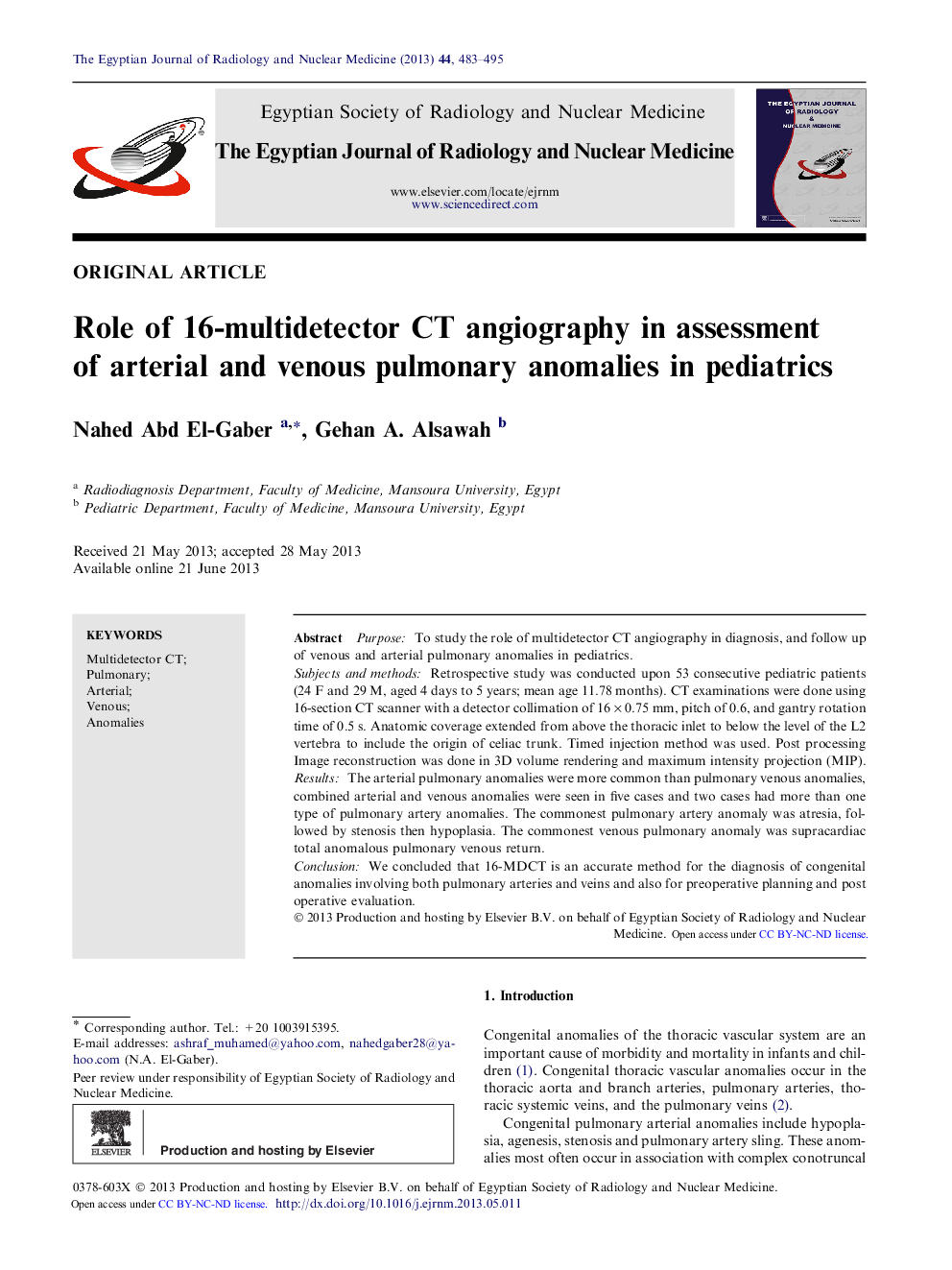| Article ID | Journal | Published Year | Pages | File Type |
|---|---|---|---|---|
| 4224563 | The Egyptian Journal of Radiology and Nuclear Medicine | 2013 | 13 Pages |
PurposeTo study the role of multidetector CT angiography in diagnosis, and follow up of venous and arterial pulmonary anomalies in pediatrics.Subjects and methodsRetrospective study was conducted upon 53 consecutive pediatric patients (24 F and 29 M, aged 4 days to 5 years; mean age 11.78 months). CT examinations were done using 16-section CT scanner with a detector collimation of 16 × 0.75 mm, pitch of 0.6, and gantry rotation time of 0.5 s. Anatomic coverage extended from above the thoracic inlet to below the level of the L2 vertebra to include the origin of celiac trunk. Timed injection method was used. Post processing Image reconstruction was done in 3D volume rendering and maximum intensity projection (MIP).ResultsThe arterial pulmonary anomalies were more common than pulmonary venous anomalies, combined arterial and venous anomalies were seen in five cases and two cases had more than one type of pulmonary artery anomalies. The commonest pulmonary artery anomaly was atresia, followed by stenosis then hypoplasia. The commonest venous pulmonary anomaly was supracardiac total anomalous pulmonary venous return.ConclusionWe concluded that 16-MDCT is an accurate method for the diagnosis of congenital anomalies involving both pulmonary arteries and veins and also for preoperative planning and post operative evaluation.
